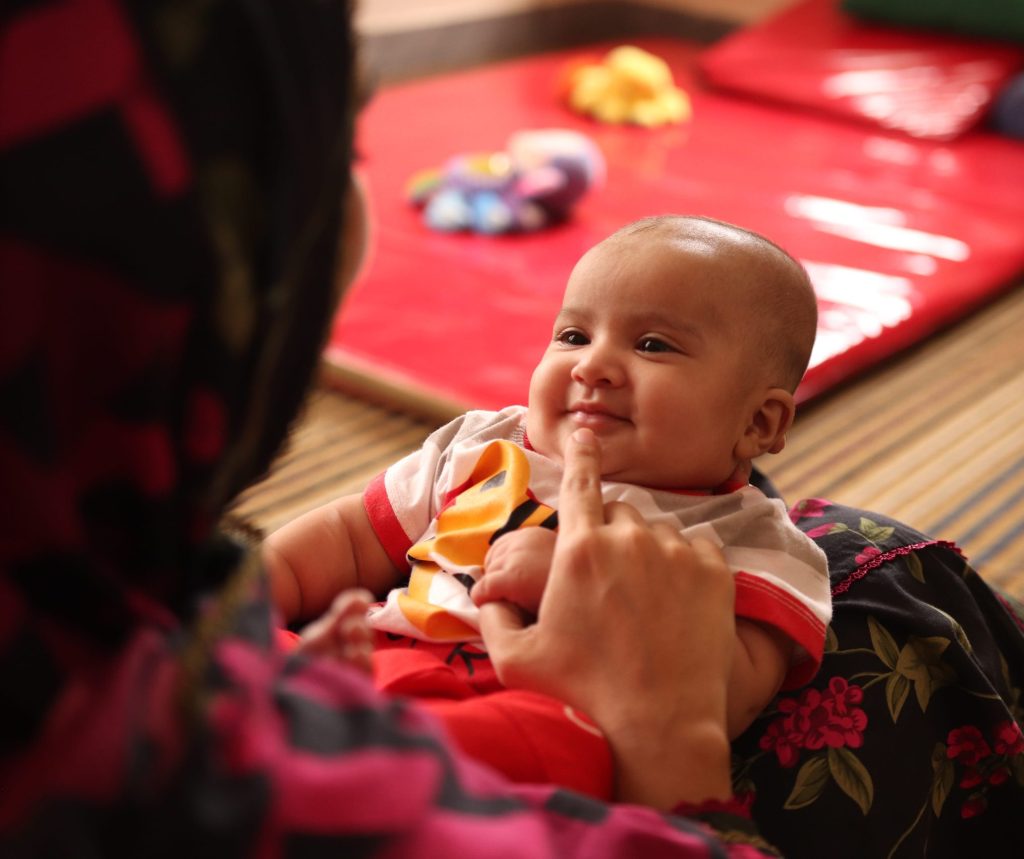The early years of life are crucial for a child’s development due to the plasticity in the developing brain, making early intervention through targeted therapy effective and vital for those at risk of developing complications associated with brain injury. Intervening early has the potential to retard complications and diminish the adverse effect of this injury, enhancing the child’s quality of life and increasing his potential to avail opportunities of success in school and beyond.
AKI’s Early Intervention (EI) program supports children from birth to three years who are not developing as expected, empowering parents to meet their child’s needs. We partner with families, using daily routines to promote growth in five key developmental areas.

Physical Skills
Achieving head control, reaching, grasping, rolling, crawling, and walking.
Cognative Skills
Paying attention, learning, solving problems.
Communication Skills
Talking, listening, understanding others, gesturing.
Self-help or Adaptive Skills
Eating, dressing self.
Social or Emotional Skills
Plays and interacts with others, able to get calm, feeling secure.

Since Moeed could not chew, we have only been giving him liquids. I knew he was hungry, I felt helpless. .... today I am overjoyed knowing that he has a full tummy. He had solid food for the first time in life.
Mother of 16-month-old Moeed Beneficiary of Early Intervention
The two main goals of AKI’s program are:
Early recognition of any atypical development in babies and infants.
Prompt intervention to tackle issues before they become ingrained.
We use the Prechtl GMA™ and Hammersmith Neurological Infant Examination (HINE), which are unique to our centre in Pakistan. These gold–standard, non–invasive, and efficient tools are endorsed for diagnosing cerebral palsy. While EI doesn’t cure disabilities, it prevents maladaptive development to a significant degree and reduces the impact of disabilities.
On average, parents see a professional to explore their initial concerns within 6–8 weeks. However, it takes three and a half years before they reach AKI and are seen for a comprehensive multidisciplinary assessment. This time lag is avoidable through early identification and a streamlined fast track referral to a rehabilitation centre.

